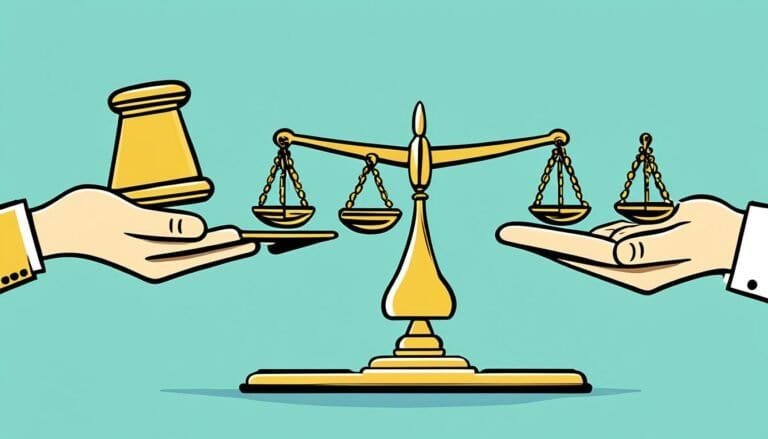What Is the Most Common Type of Communication?
Imagine communication as a bustling marketplace, where ideas and thoughts flow like a river of words.
In this vast arena of human connection, one type of communication stands out as the most common, like a familiar face in a crowded room.
But what exactly is this prevalent form of communication that has become the backbone of our daily interactions?
Join me as we explore the answer to this question, unraveling the mysteries of this ubiquitous mode of human connection, and uncovering the power it holds in shaping our relationships, both personal and professional.
Key Takeaways
- Verbal communication plays a vital role in conveying information and ideas.
- Effective listening and interpretation of nonverbal cues are essential in verbal communication.
- Verbal communication allows for effective expression and enhances meaning and impact.
- Language barriers and noise interference can pose challenges in verbal communication.
Importance of Verbal Communication
Verbal communication plays a vital role in effectively conveying information and ideas. It involves the use of spoken words and is considered the most common type of communication.
When engaging in verbal communication, effective listening is crucial. It entails actively paying attention to the speaker, understanding their message, and providing appropriate feedback. By actively listening, you can ensure that you understand the information being conveyed and respond appropriately.
Additionally, nonverbal cues also play a significant role in the effectiveness of verbal communication. These cues include facial expressions, body language, and tone of voice. They can provide important context and help interpret the speaker's intended meaning.
Being aware of and interpreting these nonverbal cues can enhance your understanding and improve communication overall.
Characteristics of Verbal Communication
One important aspect of effective communication is the ability to convey information and ideas through spoken words. Verbal communication has several characteristics that contribute to its effectiveness. One such characteristic is the use of nonverbal cues, which can enhance the message being conveyed. Nonverbal cues include facial expressions, body language, and tone of voice, all of which can provide additional context and meaning to the spoken words. Another important characteristic is effective listening. In verbal communication, it is crucial to not only speak clearly and concisely but also to actively listen to the speaker. This involves paying attention to both the verbal and nonverbal cues, as well as providing feedback to ensure understanding. By incorporating these characteristics, verbal communication can become a powerful tool for effective communication.
| Characteristics of Verbal Communication | |
|---|---|
| Nonverbal cues | Enhance the message being conveyed |
| Effective listening | Crucial for understanding and providing feedback |
Advantages of Verbal Communication
To further explore the effectiveness of verbal communication, it's important to understand the advantages it offers in conveying information and ideas.
Verbal communication allows for effective expression, enabling individuals to articulate their thoughts, feelings, and intentions with clarity and precision. Through verbal communication, people can use tone of voice, emphasis, and body language to enhance the meaning and impact of their message, ensuring a clear understanding by the recipient.
Unlike written communication, verbal communication allows for immediate feedback and clarification, reducing the chances of misinterpretation or confusion. It also promotes active listening and engagement, as individuals can respond in real-time, fostering dynamic and interactive conversations.
Challenges of Verbal Communication
A common challenge in communication arises from the reliance on verbal methods to convey information and ideas. Verbal communication can often be affected by barriers and misunderstandings, which can hinder effective communication. Here are three common challenges faced in verbal communication:
- Language barriers: Differences in language can lead to misunderstandings and misinterpretations. It becomes challenging to convey messages accurately when there's a lack of fluency or understanding in a particular language.
- Nonverbal cues: Verbal communication isn't just about words; it also involves nonverbal cues such as body language, facial expressions, and tone of voice. Misunderstanding these cues can lead to misinterpretation of the intended message.
- Noise interference: External distractions or noise can disrupt verbal communication, making it difficult to hear or understand the information being conveyed.
Enhancing Verbal Communication Skills
When seeking to enhance your verbal communication skills, it's crucial to address the common challenges faced in verbal communication. One key aspect to focus on is improving your listening skills. Active listening involves fully engaging with the speaker, paying attention to their words, and providing feedback. This helps in understanding the message accurately and responding appropriately.
Additionally, effective public speaking is essential for clear communication. To improve public speaking skills, practice delivering presentations, speeches, or participating in group discussions. Focus on using clear and concise language, maintaining eye contact, and using appropriate body language. Remember to speak confidently and engage with your audience.
Conclusion
So, in conclusion, verbal communication is the most common type of communication used in our daily lives. It allows us to express our thoughts, ideas, and emotions directly to others.
Verbal communication is characterized by spoken words, tone of voice, and body language. It offers advantages such as immediate feedback and clarity, but also presents challenges like misinterpretation and lack of non-verbal cues.
By enhancing our verbal communication skills, we can effectively convey our message and establish meaningful connections with others.






